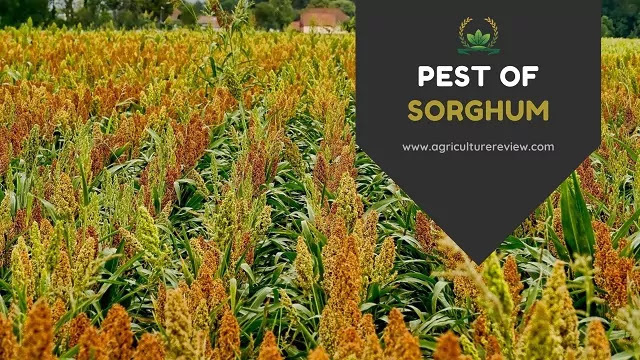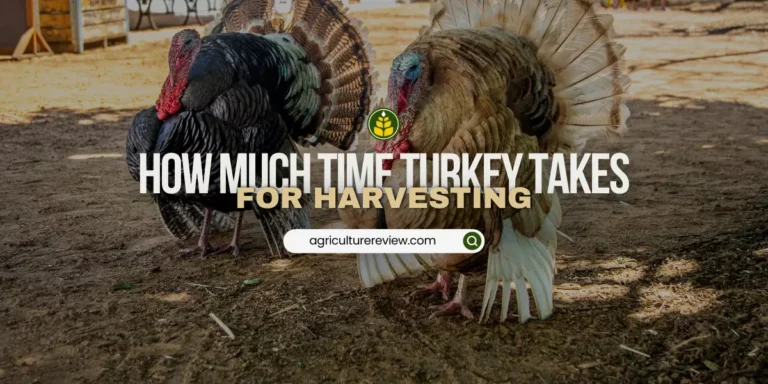 |
| Pest of Sorghum |
Table of Contents
Pest of Sorghum
1.Sorghum Shoot fly:
Causal Organism of sorghum shoot fly: Atherigona soccata (Muscidae: Diptera)
Distribution
Maharashtra, Andhra Pradesh , Tamil Nadu and Karnataka
Host range: Maize, Ragi, bajra, rice, wheat and grasses
Damage symptoms
The maggot on hatching migrates to the side of leaf and enters between the leaf sheath and stem. After reaching the soil level, the maggot bores inside the stem and cuts the growing point leading to “dead heart” symptom.
The infested plant produces side tillers. The attack is more severe during summer than kharif season.
Life-cycle
Adult, a whitish grey female fly lays white, cigar-shaped eggs on the lower surface of leaf blades mostly during morning hours (40 eggs). The egg is white, cylindrical, distal end somewhat flattened. The time period varies from 2-3 days. Maggot is dirty white and apodous. Mature larvae are yellow and about 6 mm long. The larval period is 8-10 days and has four larval instars. It pupates at the bottom of the stem or in soil for 8-10 days. The life cycle is completed in 17-21 days.
ETL: 10% dead hearts or 1 egg / plant
Management
1. Use resistant varieties like CHS-7, 8, IS-5566, 5285, 5613 etc.
2. To minimise shoot fly damage you can start sowing seeds of sorghum soon after onset of monsoon rains.
3. Use higher seed rate (12.5 kg/ha) and take away the shoot fly damaged seedlings at the time of thinning or raise nursery and transplant only healthy seedlings.
4. Pull out and destroy plants showing dead hearts at the time of thinning.
5. found out hanging sort of plastic fishmeal trap @ 12/ha till the crop is 30 days old.
6. Treat 100 kg seeds with chlorpyriphos 20 EC 400 ml or quinalphos 25 EC 400 ml or imidacloprid 48 FS 1.2 L or imidacloprid 70 WS 1.0 kg or thiomethoxam 30 FS 1.0 L
7. You can apply granular application of phorate 10 G or carbofuran 3 G to the furrow. This should be done at the time of sowing at 2.5 kg a.i./ha.
8. Spray Endosulfan 35 EC @18 ml, dimethoate 30 EC @ 12 ml and methyl demeton 25 EC @12 ml for a neighborhood of 120 m2 nursery.
9. Spray anybody of the subsequent insecticides within the mainfield – endosulfan 35 EC 500 ml, dimethoate 30 EC 500 ml (250 L of spray fluid/ha).
2. Stem borer:
Causal organism of stem borer: Chilo partellus (Crambidae: Lepidoptera)
Distribution
Stem borer of sorghum can be found in India, Pakistan, Sri Lanka, Indonesia, Iraq, Japan, Uganda, Taiwan, Sudan, Nepal, Bangladesh and Thailand.
Host range
Stem borer pest mainly attacks Maize, sorghum, sugarcane, bajra, rice, Johnson grass , Ragi , etc.
Damage symptoms
It infests the crop a month after sowing and therefore the damage persists till emergence of ear heads. Central shoot withering resulting in “dead heart” is that the typical damage symptom.
Bore holes are visible on the stem near the nodes. Typical “shot hole” symptom can be seen, it happens because of young larvae that feeds on tender folded leaves. Internally tunnelling caterpillars can be seen on the affected parts of the stem.
Life-cycle
The adult moth is medium in size and light yellow in colour. Within time period of 2-5 days it lays near about 300 scale like flat oval eggs. They are placed on the under surface of leaf near the midrib.
The larva is raw sienna with a brown head and therefore the prothoracic shield measures about 25 mm long. The total time of the larva or you can say larval period is about 28 – 50 days and that is completed with seven instars. It pupates inside the stem and emerges in 7-10 days through the larvae’s entry holes as as adult.
Management
1. The stubbles should be ploughed up during winter and burnt to destroy the hibernating larvae.
2. E 302, E 303, IS 2205, ICSV 700, these are the name of resistant cultivars that you can grow in your field.
3. Dead hearts should be pulled out and used as fodder or buried in manure pits.
4. Sow lab lab or Dolichos as an intercrop within the ratio of 4:1 to minimise the stem borer damage.
5. found out light trap till midnight to draw in and kill the stem borer moths.
6. Bio-control agents like,Trichogramma chilonis (egg parasitoids) minutum, Bracon chinensis and Apanteles flavipes, (larval parasitoids) can be introduced in the field to control this pest.
7. Mix anybody of the subsequent insecticides with sand to form up the entire quantity of fifty kg and apply within the leaf whorls.
Phorate – 10 G 8 kg,
carbofuran 3 G 17 kg,
endosulfan 4D 25 kg
or spray endosulfan 35 EC 750 ml
or carbaryl 50 WP 1 kg (500 L spray fluid/ha).
3. Pink stem borer:
Causal organism of pink stem borer: Sesamia inferens (Noctuidae: Lepidoptera)
Distribution
India, Pakistan, Malaysia, Taiwan, Burma, Bangladesh, Sri Lanka, South East Asia, China, Korea, Japan and Indonesia.
Host range
Sorghum, maize, rice, wheat, sugarcane, bajra and ragi, barley, guinea grasses.
Damage symptoms
The pink larva bores into the stem and damages the central shoot leading to dead heart.
Life-cycle
Dark brown streaks on the fore wings and white hind wings with fawn coloured body is the characteristic of adult moth. the feminine lays about 150 creamy-white and hemispherical eggs that are arranged in two or three rows between the leaf sheath and therefore the stem of the host plant.
Egg period 7 days. The adult larvae measures about 25 mm and is straw with a purple pink tinge and a reddish-brown head. The larval period 25 days but in cold months it’s going to be extended to 75 days.
Pupation occurs within the larval tunnel within the stem and therefore the adult emerges in 12 days. One generation may take 6-7 weeks. The life cycle is completed in 45-75 days. There are 4-6 generations per annum .
Management
1. Introduce egg parasitoids like:
Telenomus sp., Trichogramma chilonis;
Larval parasitoids: Apanteles flavipes, Bracon hebetor;
Pupal parasitoid: Tetrastichus ayyari
2. Spray endosulfan 35 EC @ 1 L/ha or chlorpyriphos 20 EC 1.0 L / ha or applycarbofuran 3 G @ 25 kg/ ha or cartap hrdrochloride 4 G @18.75 kg/ha at every 20 days interval after germination of the crop.
4.Sorghum midge
Causal organism of sorghum midge: Contarinia sorghicola (Cecidomyiidae: Diptera)
Distribution
India, Pakistan, Bangladesh, West Iran, Sri Lanka, Sudan, Java, Africa, South East Asia, South China, South America, West Indies , USA and Italy.
Host range
Cultivated and wild species of sorghum.
Damage symptoms
A maggot feeds on the developing grains and pupates there. Damage symptoms are white pupal cases that protrudes out from the grains and chaffy grains with holes.
Life-cycle
The adult fly is little , fragile with a bright orange abdomen and a pair of transparent wings. It lays eggs singly in developing florets leading to pollen shedding. A female lays about 30-35 eggs at the speed of 6-10 in each floret.
The time period is 3-4 days. The maggot has four instars with duration of 8-10 days. Larvae are colourless, but, when adult , they’re dark orange. Larval period 9 – 11 days. The larval stage undergoes diapause during a cocoon during December – January within a spikelet.
Pupates beneath the glume. The pupal period 3 days. White pupal skin remains at the tip of the spikelet when the adult emerges. A generation is completed in 14-16 days. The insect’s rapid developmental cycle permits 9-12 generations.
Management
1. DJ 6541, AF 28, ICSV 197, ICSV 745, ICSV 88032, these are the name of resistant cultivars that you can grow in your field.
2. You can introduce larval parasitoids in your field like – Apanteles sp., Eupelones popa;
Larval and pupal parasitoid – Tetrastichus spp.;
Predators – Orius albidipennis; Tapinoma indicum
3. You can apply first application at nearly 90% ear head emergence. Repeat this after 4 or 5 days.
The insecticides that you can use are:
spray Endosulfan 35 EC 1.0 L
Malathion 50 EC 1.0 L
carbaryl 50 WP 2 kg/ha or
Endosulfan 4 D, or
Malathion 5 D or
carbaryl 10 D or
quinalphos 1.5 D, you can spray these @ 25 kg/ha .





